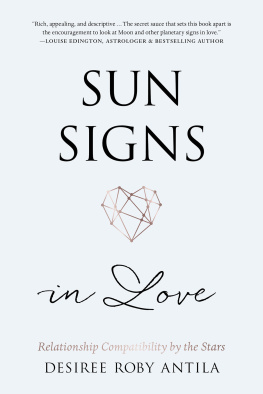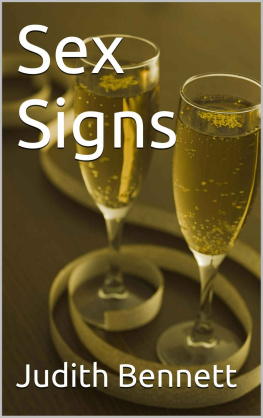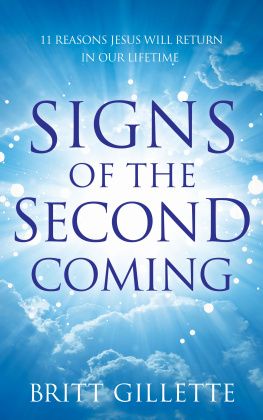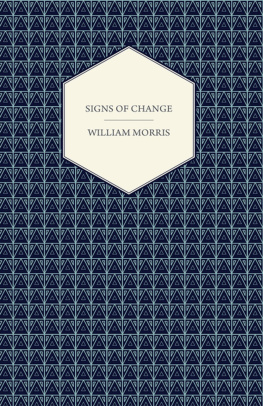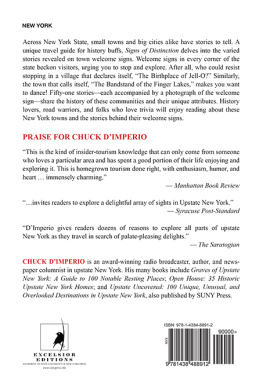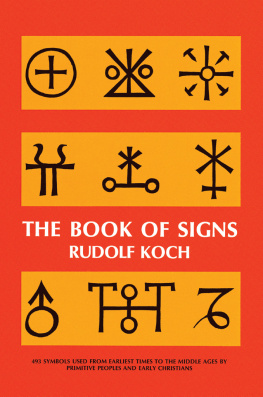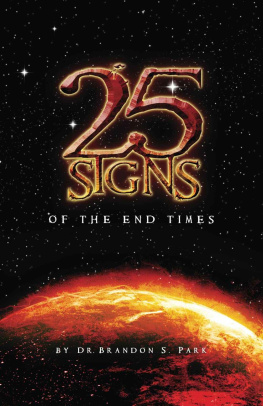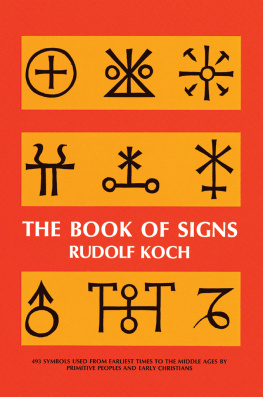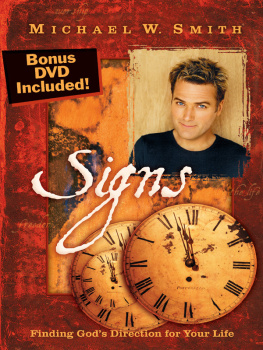Brevda William - Signs of the Signs: The Literary Lights of Incandescence and Neon
Here you can read online Brevda William - Signs of the Signs: The Literary Lights of Incandescence and Neon full text of the book (entire story) in english for free. Download pdf and epub, get meaning, cover and reviews about this ebook. year: 2011, publisher: Bucknell University Press, genre: Art. Description of the work, (preface) as well as reviews are available. Best literature library LitArk.com created for fans of good reading and offers a wide selection of genres:
Romance novel
Science fiction
Adventure
Detective
Science
History
Home and family
Prose
Art
Politics
Computer
Non-fiction
Religion
Business
Children
Humor
Choose a favorite category and find really read worthwhile books. Enjoy immersion in the world of imagination, feel the emotions of the characters or learn something new for yourself, make an fascinating discovery.

- Book:Signs of the Signs: The Literary Lights of Incandescence and Neon
- Author:
- Publisher:Bucknell University Press
- Genre:
- Year:2011
- Rating:4 / 5
- Favourites:Add to favourites
- Your mark:
- 80
- 1
- 2
- 3
- 4
- 5
Signs of the Signs: The Literary Lights of Incandescence and Neon: summary, description and annotation
We offer to read an annotation, description, summary or preface (depends on what the author of the book "Signs of the Signs: The Literary Lights of Incandescence and Neon" wrote himself). If you haven't found the necessary information about the book — write in the comments, we will try to find it.
Brevda William: author's other books
Who wrote Signs of the Signs: The Literary Lights of Incandescence and Neon? Find out the surname, the name of the author of the book and a list of all author's works by series.
Signs of the Signs: The Literary Lights of Incandescence and Neon — read online for free the complete book (whole text) full work
Below is the text of the book, divided by pages. System saving the place of the last page read, allows you to conveniently read the book "Signs of the Signs: The Literary Lights of Incandescence and Neon" online for free, without having to search again every time where you left off. Put a bookmark, and you can go to the page where you finished reading at any time.
Font size:
Interval:
Bookmark:
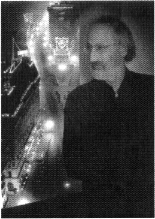
William Brevda was born in Brooklyn, New York and raised in Huntington, Long Island. After receiving his BA from the New School for Social Research, he earned an MA from the State University of New York at New Paltz, and a PhD in English from the University of Connecticut. He has taught at Illinois State University, at the University of Mississippi, as a visiting professor at the University of Groningen, The Netherlands, and is currently Professor of English at Central Michigan University, specializing in modern American literature. Dr. Brevda is the author of Harry Kemp: The Last Bohemian (BUP 1986), which is a critical biography of The Tramp Poet. He has also published articles on American writers and on noir.
For their emotional support, I thank my mother C. Shirley Brevda, my sister Mary Brevda, brother-in-law Homer Wells and niece Rachel Brevdawells, my wife Pat McGann-Zionts and step-daughters Polina and Emily, and my friends Luke and Barbara Salisbury.
For reading parts of this work, I thank Luke Salisbury, Tom Bertonneau, Gray Kochhar-Lindgren, Tom Doherty, Des Harding, Pete Koper, Mark Freed, Brooke Harrison, Danny Patterson, and Jeffrey Weinstock.

Permission to reprint chapters first published as articles has been granted as follows:
Chapter 1, Everything Possible Nothing Real: Electric Signs of America 1890-1925 was first published in a shorter version as Everything Possible Nothing Real: Electric Signs in American Life and Literature 18901925, in North Dakota Quarterly 62, no. 3 (Summer 19941995): 2254.
Chapter 3, How Do I Get To Broadway? Reading Dos Passoss Manhattan Transfer _Sign was first published in a shorter version as How Do I Get To Broadway? Reading Dos Passoss Manhattan Transfer Sign, in Texas Studies in Literature and Language 38, no. 1 (1996): 79114. Copyright (c)1996 by the University of Texas Press. All rights reserved.
Chapter 4, Neon Light in August: Faulkners Quarrel with Modernity was first published in a slightly modified version as Neon Light in August: Electric Signs in Faulkners Fiction, in Faulkner and Popular Culture, edited by Doreen Fowler and Ann J. Abadie. (Jackson and London: University Press of Mississippi, 1990): 21441.
Chapter 5, Broadway by Night by Hollywood: Fitzgerald Revisited was first published as Broadway by Night by Hollywood: Fitzgerald Revisited, in Connecticut Review 22, no. 1 (Spring 2000): 2942.
Chapter 6, Search for the Originary Sign of Noir: Poes The Man of the Crowd was first published as Search for the Originary Sign of Noir: Poes The Man of the Crowd, in Mythosphere: A Journal for Image, Myth and Symbol 2, no. 4 (2000): 35767.
Chapter 7, The Double Nihilation of the Neon: Raymond Chandlers Los Angeles was first published as The Double Nihilation of the Neon: Raymond Chandlers Los Angeles, in Texas Studies in Literature and Language 41 no. 1 (1999): 71102. Copyright (c)1999 by the University of Texas Press. All rights reserved.
Chapter 8, Neon Lights Around Everything: Wests West, Hitlers Empire, Postmodernisms Reality was first published as Neon Lights Around Everything: Wests West, Hitlers Empire, Postmodernisms Reality, in Soundings: An Interdisciplinary Journal 85, no. 34 (Fall/Winter 2002): 381422.
Chapter 9, Under the Neon Rainbow: Nelson Algrens Chicago was first published as The Rainbow sign of Nelson Algren, Texas Studies in Literature and Language 44 no. 4 (2002): 393413. Copyright (c)2002 by the University of Texas Press. All rights reserved.
I would like to thank Robert W. Lewis, editor of North Dakota Quarterly, Doreen Fowler, editor of Faulkner and Popular Culture, Vivian Shipley, editor of Connecticut Review, William G. Doty, editor of Mythosphere: A Journal for Image, Myth and Symbol, the late Tony Hilfer, editor of Texas Studies in Literature and Language, and Allen Dunn, editor of Soundings: An Interdisciplinary Journal.

Credit lines for quotations are as follows:
Excerpts from The White Goddess: A Historical Grammar of Poetic Myth by Robert Graves copyright 1948 by International Authors N.V. First American, amended and enlarged edition, 1966 edition Reprinted by permission of Carcanet Press Limited.
The Lines from Buffalo Bills, Copyright 1923, 1951, 1991 by the Trustees for the E. E. Cummings Trust. Copyright 1976. The lines from Poem, or Beauty Hurts Mr. Vinal. Copyright 1926, 1954, 1991 by the Trustees for the E. E. Cummings Trust. Copyright 1985 by George James Firmage, from Complete Poems: 19041962 by E. E. Cummings, edited by Geore J. Firmage. Used by permission of Liveright Publishing Corporation.
By Nathanael West, from Miss Lonelyhearts & the Day of the Locust, copyright (c)1939 by Estate of Nathanael West. Reprinted by permission of New Directions Publishing Corp.
Excerpts from The Town and the City, copyright 1950 by Jack Kerouac and renewed 1977 by Stella S. Kerouac, reprinted by permission of Houghton Mifflin Harcourt Publishing Company.
Excerpts from Manhattan Transfer, copyright 1925 by John Dos Passos and renewed 1953 by Elizabeth Dos Passos. Reprinted by permission of Lucy Dos Passos Coggin.
Excerpts from The Great Gatsby are reprinted by permission of Harold Ober Associates Incorporated and also reprinted with the permission of Scribner, a Division of Simon & Schuster, Inc., from The Great Gatsby by F. Scott Fitzgerald. Copyright 1925 by Charles Scribners Sons. Copyright renewed 1953 by Frances Scott Fitzgerald Lanahan.
Excerpts from The Man with the Golden Arm. Copyright 1949 by Nelson Algren, renewed 1976. Reprinted with the permission of Seven Stories Press, www.sevenstories.com.
Excerpts from Visions of Cody, Visions of Cody, Mexico City Blues, and Book of Blues are reprinted by permission of SLL/Sterling Lord Literistic, Inc. Copyright by Jack Kerouac.
If I could have made this enough of a book it would have had everything in it. So begins the final chapter of Death in the Afternoon, in which Hemingway describes the things he left out of his book. With a nod to Hemingway, here are some things I would have included in this book if it could have had everything in it.
It would have had the signs of Harlem in the poetry of Langston Hughes. In Juke Box Love Song, for example, Hughes rhapsodizes:
I could take the Harlem night
and wrap around you,
Take the neon lights and make a crown.
Also in Montage of a Dream Deferred (1951) is the poem Neon Signs that I quote in part:
WONDER BAR
.
..
.
WISHING WELL
What happens to a dream deferred? Maybe it just turns into the neon sign of a Harlem nightclub. Hughess pictorial poem recalls an earlier example of concrete poetry in William Carlos Williamss The Attic Which Is Desire:
* * *
* S *
* O *
* D *
* A *
* * *
Charles Sanders Peirce called the making of signs semiosis. Hughes and Williams called it poetry.
There should have been more about poetry and painting in this book: how poets brought pictures into their poems; how painters brought words into their paintings. In Georgia OKeefes Radiator Building, Night, New York (1927), she painted the name of her husband, Alfred Stieglitz, in the lights of an electric sign. On a less exuberant note, proletarian poets of the thirties brought signs into their poems to portray the capitalist jungle of the Depression. In Chorus for Survival, Horace Gregory recalled to his son the neon sign Success across our foreheads. Watch the signs flash red, and gold, and blue, and green, / Eat Drink Be Merry At Mikes, Kenneth Fearing sardonically wrote. In Boy with His Hair Cut Short, Muriel Rukeyser described a boy who has had no success looking for a job watching a drugstore sign: The arrows electric red always reaches its mark, / successful neon!
Font size:
Interval:
Bookmark:
Similar books «Signs of the Signs: The Literary Lights of Incandescence and Neon»
Look at similar books to Signs of the Signs: The Literary Lights of Incandescence and Neon. We have selected literature similar in name and meaning in the hope of providing readers with more options to find new, interesting, not yet read works.
Discussion, reviews of the book Signs of the Signs: The Literary Lights of Incandescence and Neon and just readers' own opinions. Leave your comments, write what you think about the work, its meaning or the main characters. Specify what exactly you liked and what you didn't like, and why you think so.

